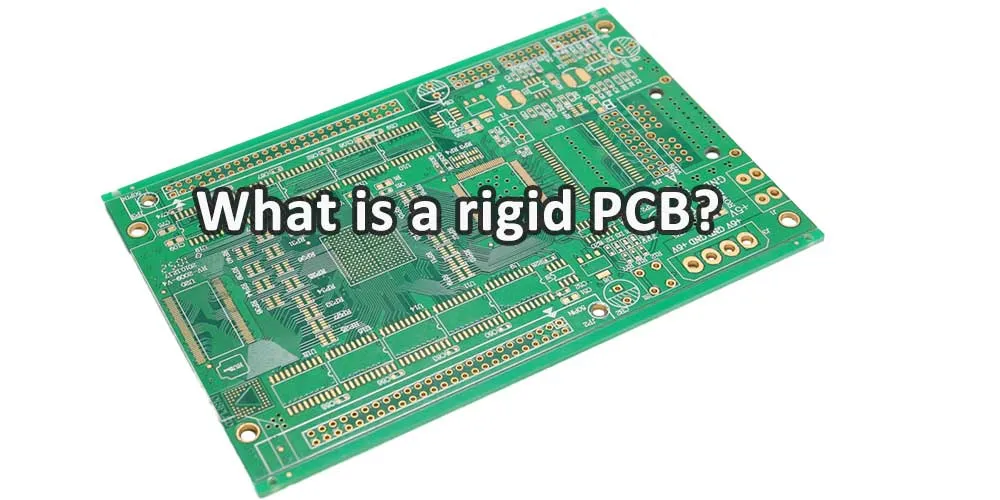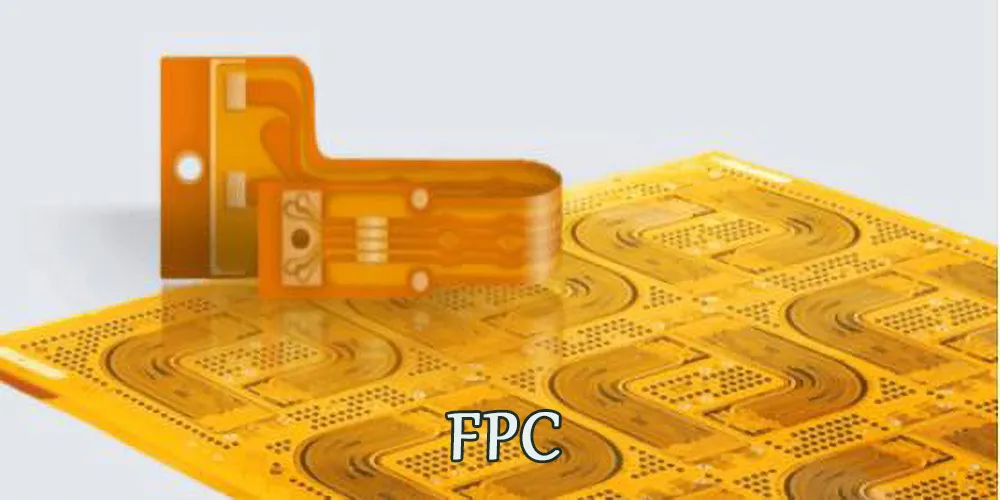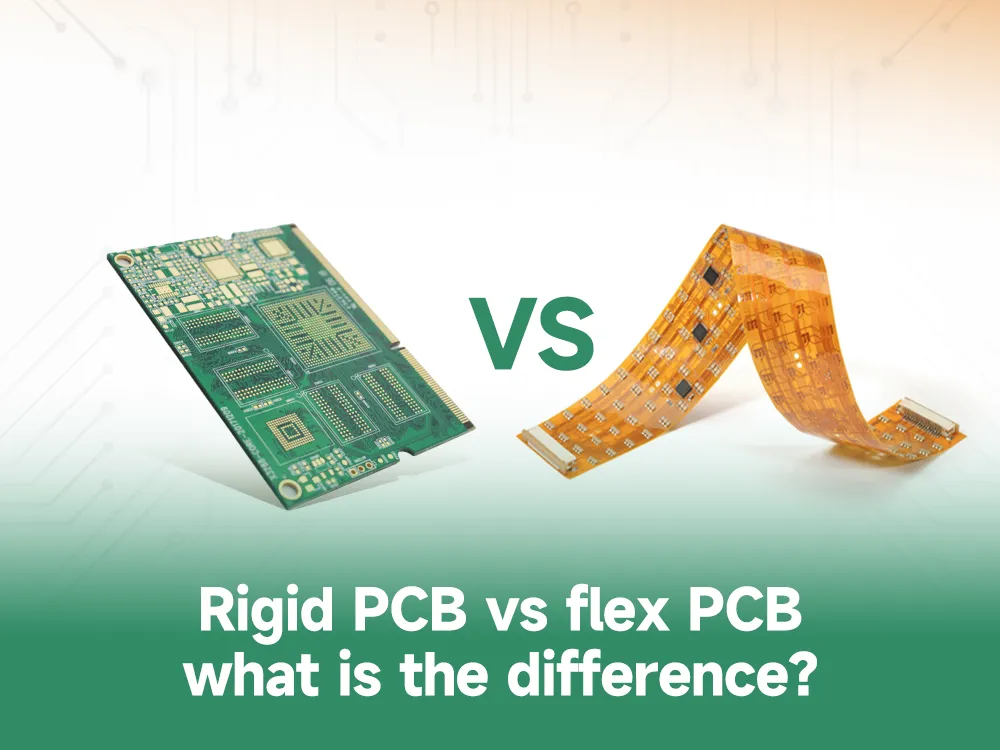Interested in what we offer?
Get in touch with us to find out how
we can help you!
Rigid PCB vs. Flexible PCB: How Are They Different?
As time passes by, things change and PCBs aren’t exceptions. Yes, you’ve heard that right! Like many other thighs in this dynamic world, printed circuit boards (PCBs) have also changed and are now in different types.
In today's world, PCBs come in different types, and a few of them are rigid PCBs and flexible PCBs. While the names are different, there are a few things both of them have in common.
For example, all types of PCBs have at least one layer of copper circuitry aimed to create a functional unit. Moreover, all PCBs tend to be the operating force behind electronic devices.
However, there are a few similarities, and there are differences between flexible PCBs and rigid PCBs. In this blog, we’re going to explore rigid PCBs vs. flexible PCBs, letting you know them well and choose what suits your needs.
Explore More!
What are Rigid PCB and Flexible PCB?
Before we skip to an end-to-end exploration of rigid PCB Vs, flexible PCB, having a sneak peek at both of them is crucial. It’s essential because a basic understanding of these two will help you easily understand the differences. So, let’s first understand what is a rigid PCB and a flex PCB!
What Is a Rigid PCB
Rigid PCB is what you exactly imagine when hearing the term “PCB.” It features a rigid, unbending board, in general green, reinforced with glass. The very type of PCB connects components through conducting tracks and other elements, systematically arranged on a non-conductive substrate. In a rigid PCB, the non-conductive substrate contains glass, giving it strength and rigidity. This type of board provides exceptional support for components and excellent thermal resistance.

Flexible PCB
Though a flexible PCB also features conductive tracks on a non-conductive substrate, this type of circuit board uses a flexible base material like polyimide. The flexible base allows flexible circuits to withstand vibration, evaporate heat, and fold up into different shapes. Because of their structural give, flexible circuit boards are used increasingly in compact and innovative electronics products, making them one of the popular choices.

Differences Between Flexible PCBs, and Rigid PCBs
After understanding the basics of both the right PCBs and flexible PCBs, it’s time to dig deeper and explore the differences between these two: Let’s do it on different parameters!

Rigid PCB vs. Flexible PCB: Material & Structure
Rigid PCBs and flexible PCBs are made up of different types of conductive materials. While the former is made of inflexible electro-deposited copper, the latter is made using bendable annealed copper.
Rigid PCB vs. Flexible PCB: Fabrication
Rigid PCBs and flexible PCBs are different in manufacturing as well. While the former is fabricated with traditional green solder masks, the latter is made up using an overlay process intending to protect the exposed circuit of the component.
Rigid PCB vs. Flexible PCB: Application
When using rigid PCBs, the device has to be made to fit the PCB. Flexible PCBs, on the other hand, are unique, as they enable manufacturers with the independence to make the PCB fit the device. Rigid PCBs are ideal to use in computers and vehicles, while flexible PCBs are excellent alternatives for wearable electronics, medical devices, and drones.
Rigid PCB vs. Flexible PCB: Size and Weight
Apart from all the above, the rigid PCB and flexible PCB are different in size and weight as well. While the former is thicker and heavier, in general, the latter is lightweight and thin, ideal for manufacturing compact devices.
Rigid PCB vs. Flexible PCB: Flexibility
Flexibility is also one of the aspects that differentiates the right PCBs from flexible PCBs. You can’t bend or flex the rigid PCB, while the flexible PCB allows you to twist, bend, and fold them into multiple shapes, making them suitable for complex and confined spaces.
Rigid PCB vs. Flexible PCB: Durability
Rigid PCB tends to be more durable in static environments where there’s no movement is expected. Flexible PCBs, on the other hand, are well-suited for dynamic applications where there’s vibration and movement are present but might degrade over time with frequent bending.
Rigid PCB vs. Flexible PCB: Heat Dissipation
Rigid PCBs and flexible PCBs are different in heat dissipation as well. While the rigid PCBs are good at dissipating heat, the flexible PCBs are more likely to be less effective against heat dissipation without tailored design features.
Rigid PCB vs. Flexible PCB: Connection and Complexity
Rigid PCBs are convenient when there’s a need for simple circuit design. Flexible PCBs, on the other hand, enable complex designing with fewer connections, mitigating the need for specific, or separate wiring.
Rigid PCB vs. Flexible PCB: Cost
Rigid PCBs are way more cost-effective and affordable and function well in different electronic applications. On the other hand, flexible PCBs are expensive to build as they’re adaptable and capable of withstanding more environmental factors compared to rigid PCBs.
Since flexible PCBs can be simply manipulated to fit in smaller spaces, they contribute to reducing the overall size of devices, helping companies save more down the line.
Wrapping Up!
We explored this guide consisting of a detailed exploration of rigid PCB vs. flexible PCB, letting you know everything you need to know. This detailed analysis might have given you a detailed information to extinguish your needs. If you need more contact us now to get a free quote and the services you need!